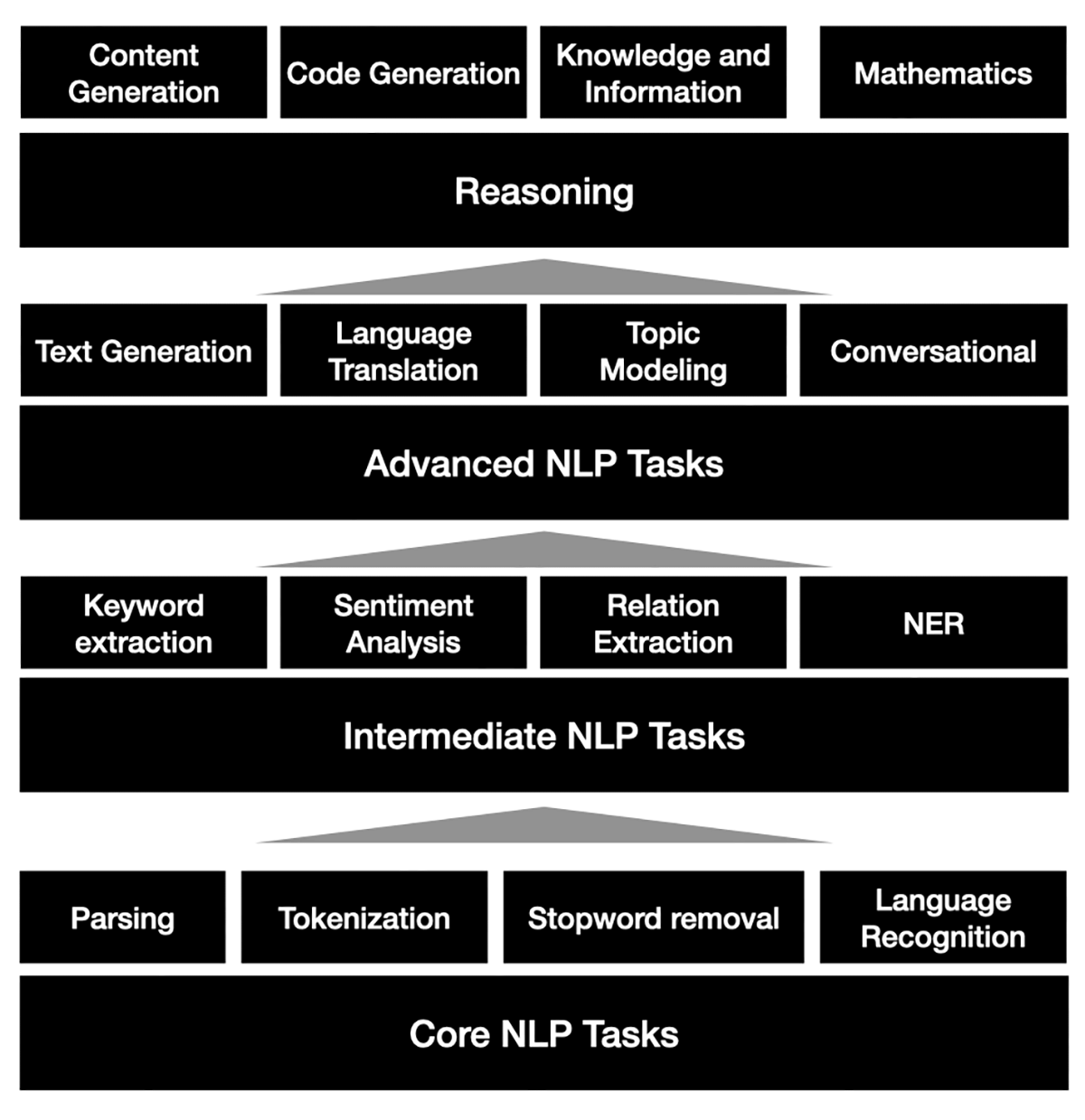How ChatGPT's Multi-Modal LLM Architecture and Advanced Reasoning Capabilities Make it a Powerful NLP Tool
- 6 minutes read - 1249 words
Table of Contents
ChatGPT is a language model built on the GPT-4 architecture that can perform natural languages processing tasks such as tokenization, part-of-speech tagging, named entity recognition, and parsing.
ChatGPT can perform complex tasks such as question-answering, text-based reasoning, and open-domain dialogue generation thanks to its advanced reasoning capabilities.
ChatGPT’s multi-modality allows it to process and generate text, speech, and other communication modalities, making it a versatile tool for various language-related applications.
What makes ChatGPT so effective?

ChatGPT is a GPT-4-based language model that generates contextually relevant responses in a conversational format. It can perform a variety of natural language processing (NLP) tasks as a large-scale AI language model, including core NLP tasks like tokenization, part-of-speech tagging, named entity recognition, and parsing.
ChatGPT can perform more advanced NLP tasks such as sentiment analysis, text classification, machine translation, and conversational capabilities by building on these core NLP tasks.
Reasoning and Complex problem-solving tasks
ChatGPT can perform reasoning and complex problem-solving tasks at the highest level, which require a deeper understanding of the text, inference, and problem-solving.
These tasks include question-answering, text-based reasoning, and the generation of open-domain dialogue. ChatGPT synthesizes information from various sources in these cases and uses context and logic to generate relevant and coherent responses.
Multi-modal language model
ChatGPT is also a multi-modal language model, which means it can process text, images, and other forms of communication. ChatGPT can now provide more seamless and intuitive user interactions across multiple platforms.
ChatGPT is a sophisticated LLM with multiple tasks and reasoning capabilities, making it an effective tool for various language-related applications.
Essential Capabilities and Tasks
Core NLP Tasks of ChatGPT and GPT-4
- Tokenization: is the process of breaking down the text into individual words, phrases, symbols, or other meaningful elements called tokens. This fundamental natural language processing task enables more accessible analysis and processing of text by converting unstructured data into a structured format (tokenization: text).
- Language identification/recognition: identify the language a text is written in (identify language: text)
- Sentence segmentation: The process of dividing a text into individual sentences (sentence segmentation for: text).
- Stopword removal: removing common words (such as ’the’, ‘and’, ‘is’, and so on) that have no significant meaning and can be excluded from further text analysis (Stopword removal for: text).
- Stemming and lemmatization: This is the process of reducing words to their base or root form, which aids in grouping similar words together and reducing overall vocabulary size (Stemming and lemmatization for: text).
- Dependency parsing: Examining a sentence’s grammatical structure to determine the relationships between words and phrases (Dependency parsing for: text ; returns a tree).
- Constituency parsing: determining a sentence’s syntactic structure by determining its constituent phrases and their hierarchical organization (do constituency parsing for: text).
- Coreference resolution : is essential for natural language understanding because it aids in identifying and clarifying the relationships between various entities and concepts in a text (coreference resolution for: text).
Intermediate NLP Tasks of ChatGPT and GPT-4
- Part-of-speech (POS) tagging : is an intermediate task in natural language processing (NLP) that involves assigning a grammatical category or “part of speech” to each word or token in a given text.
- Spam Detection : detecting spam with ChatGPT (is this text spam: text), it is considered an intermediate NLP task, ChatGPT might not be the choice for spam detection because spam strategies are evolving over time and GPT-4 has a cutoff date
- Keyword extraction : automatically identifying and extracting the most relevant and essential words or phrases from a text document.
- Sentiment Analysis : This refers to the ability of the LLM to analyze the emotional tone of a piece of text, such as whether the text is positive, negative, or neutral.
- Named Entity Recognition : This refers to the ability of the LLM to recognize and identify named entities, such as people, places, organizations, and dates, in a given text.
- Aspect-based sentiment analysis : goes beyond basic sentiment analysis by determining sentiment towards specific aspects in a text, requiring a higher level of language understanding than core NLP tasks.
- Relation Extraction : is identifying and classifying relationships between entities in a text, such as “person A works at organization B” or “location X is in country Y.”
- Text Classification : This refers to the ability of the LLM to classify a given text into predefined categories, such as topic, genre, or sentiment.
Advanced NLP Tasks
- Question Answering : answering natural language questions posed to the language model.
- Language Translation is translating text from one language to another while maintaining meaning.
- Conversational : generating appropriate responses during a conversation between humans and AI systems
- Summarization and Compression reducing a longer text to a shorter, more concise version while retaining the main points.
- Paraphrasing is the process of expressing the meaning of a given text in different words or phrasing while retaining its original intent.
- Text Generation produces coherent and meaningful text responding to a prompt or context.
- Text Completion is predicting missing words or phrases in a given context.
- Fill-Mask : Predict and complete missing words or phrases within a given text based on context.
- Grammar and spell-checking : detecting and correcting grammatical and spelling errors in the text.
- Finding topics or themes in a collection of documents or text data is referred to as topic modeling.
- Semantic Role Labeling (SRL) is a natural language processing (NLP) task that aims to identify the semantic roles or arguments within a sentence and associate them with the appropriate predicate, usually a verb.
Reasoning and Complex Problem-Solving Activities
- Content generation is creating stories , synthetic data , synthetic CVs , or prompts .
- Code generation and assistance: using AI language models to create code
- Extracting knowledge and information from documents
- Suggestions and Recommendations: Make product recommendations .
- Language and communication: generating natural language responses ] during user conversations
- performing fundamental mathematical calculations
- Data analysis and data insights: data analysis and data insights
- Personalization and customization include role-playing , creating personalized responses , and providing personalized mental health care.
- Textual entailment is a task that involves determining whether a given piece of text (called the hypothesis) can be logically inferred or deduced from another part of the text (called the premise).
- Commonsense Reasoning is an NLP task that involves enabling machines to understand and interpret everyday knowledge that humans take for granted.
- Abductive Reasoning is an NLP task that involves inferring the most plausible explanation for a given set of observations or premises.
Conclusions
The strength of ChatGPT lies in its ability to perform various NLP tasks with high accuracy and efficiency and in its advanced reasoning capabilities, which enable it to generate relevant and coherent responses based on contextual information. Its multi-modal nature allows it to interact with users across multiple platforms, making it a versatile tool for various applications.
Furthermore, ChatGPT’s training data is extensive, encompassing many web content and other sources, allowing it to learn from various inputs. Advanced features such as attention mechanisms and transformer networks are also included in the GPT-4 architecture, which improves its performance and accuracy.
ChatGPT’s ability to perform multiple tasks, advanced reasoning capabilities, and multi-modality make it a powerful language model with many applications, including chatbots and customer service agents, content generation, and data analysis.


